Idea by
Ludovica Medori and Giorgia Pierleoni
Ringscape Wien
https://issuu.com/ringscape.wien
Call for ideas 2017
Infra-Scape
Infra-Scape

Nowadays, the individual no longer feels the need to define his identity through a social exchange, but he is accidentally trapped into indefinite crossing flows. Traditional public spaces become nothing more than crossroads, hybrid intersections between the vehicular and the pedestrian traffic.
In the project the continuous traffic flows spread a new form of sociability, by transforming the public space into a huge social catalyst, where the random collisions between the crossing flows turn into first encounters. Therefore, the project allocates multi-functional volumes in the most significant flows intersections, in order to provoke a "social collision". The project aims to create a series of "social condensers" as volumes hosting overlaps and intersections of several programs and activities that stimulate social interaction.
The program is in line with the "culture of congestion": the functional richness of the public space is nowadays essential for its proper functioning.
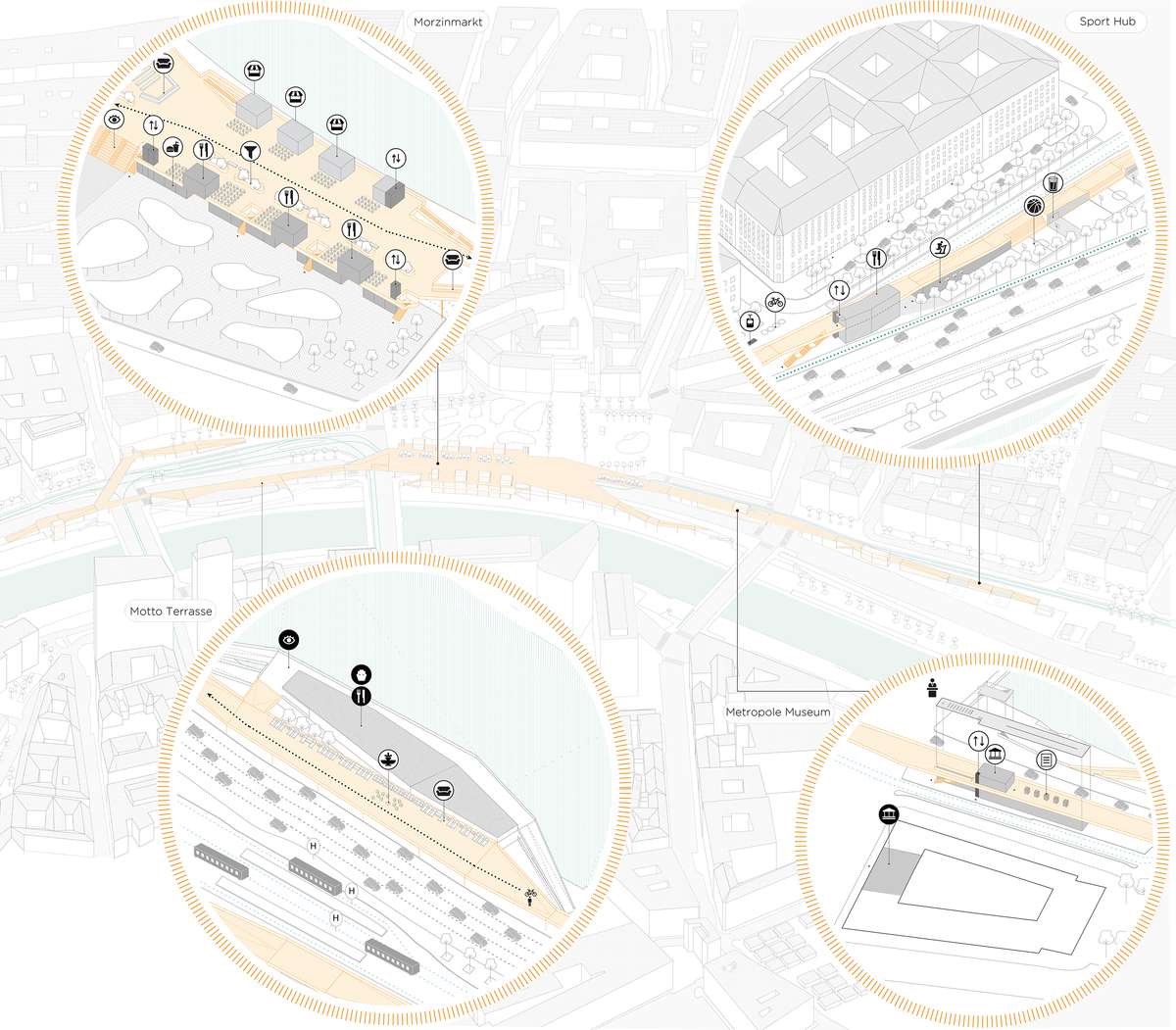
1. The space has been increased by inserting an elevated infrastructure, that allows for the allocation of functions for the creation of connections among portions of the urban fabric. The elevated infrastructure is a network tight to the urban fabric, a new interpretation of the city and thus a space of the "slowness". The infrastructure, as a multifunctional public space, acts like a social catalyst which develops new forms of collision and interaction in the complex and shared city space.

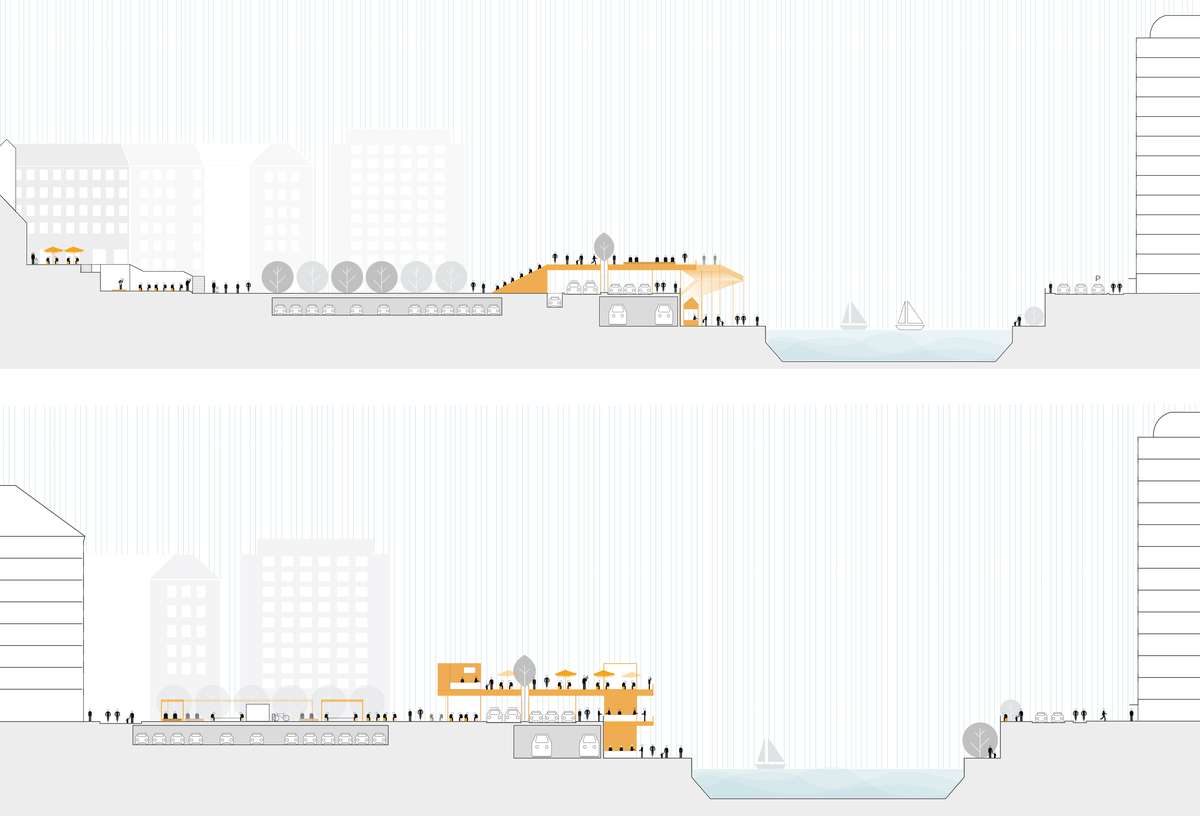
2. An added value is required to the infrastructure and it concerns the possibility of influence more the points with which it is in contact, in order to give multiple answers to territories or cities which may re-organize themselves thanks to its” smart presence”. The sections show the design of the “Morzinmarkt”, a system of market-kiosks-bars that reconnects the channel to the city by creating a cognitive unicuum among the square, the market and the channel.
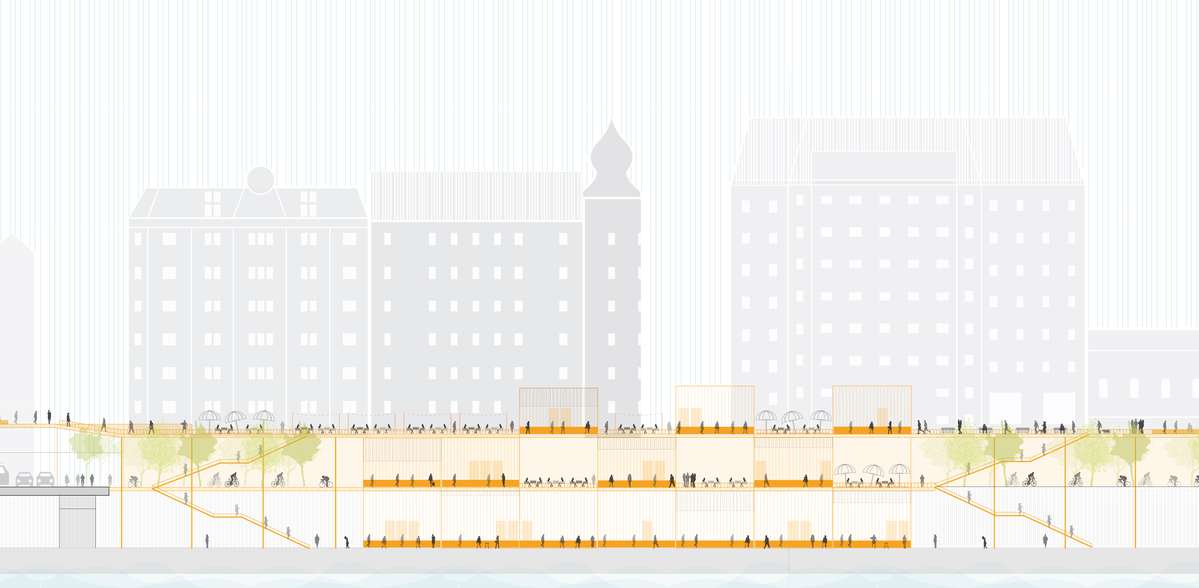
3. Public space shouldn't be a neutral open-air space, but a rich urban surface with a strong identity and suitable for everyday and flexible uses, offering options for different user groups, without exclusion. As a result, the “overhead tape” consists of a promenade surface and of a series of modular volumes, that can adapt to the needs of the city. The initial configuration responds to the need for space for historical memory, sport activities and tourist information.

4. With the design of new and valuable public spaces, new forms of sociability take place and the phenomenon of the “serendipity” is promoted. The “serendipity” is the result of the co-presence of many individuals who are able to give shape to new ideas, insights and innovations that constitute the essence of the city and it concerns the ability of men and women to turn unexpected events into opportunities.
Infra-Scape
Infra-Scape

Nowadays, the individual no longer feels the need to define his identity through a social exchange, but he is accidentally trapped into indefinite crossing flows. Traditional public spaces become nothing more than crossroads, hybrid intersections between the vehicular and the pedestrian traffic.
In the project the continuous traffic flows spread a new form of sociability, by transforming the public space into a huge social catalyst, where the random collisions between the crossing flows turn into first encounters. Therefore, the project allocates multi-functional volumes in the most significant flows intersections, in order to provoke a "social collision". The project aims to create a series of "social condensers" as volumes hosting overlaps and intersections of several programs and activities that stimulate social interaction.
The program is in line with the "culture of congestion": the functional richness of the public space is nowadays essential for its proper functioning.
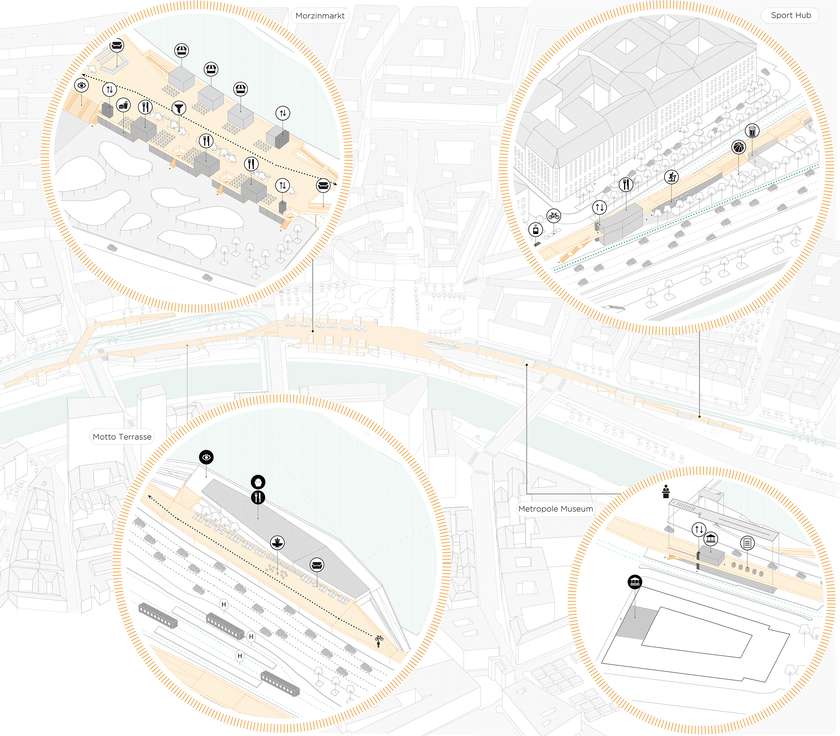
1. The space has been increased by inserting an elevated infrastructure, that allows for the allocation of functions for the creation of connections among portions of the urban fabric. The elevated infrastructure is a network tight to the urban fabric, a new interpretation of the city and thus a space of the "slowness". The infrastructure, as a multifunctional public space, acts like a social catalyst which develops new forms of collision and interaction in the complex and shared city space.
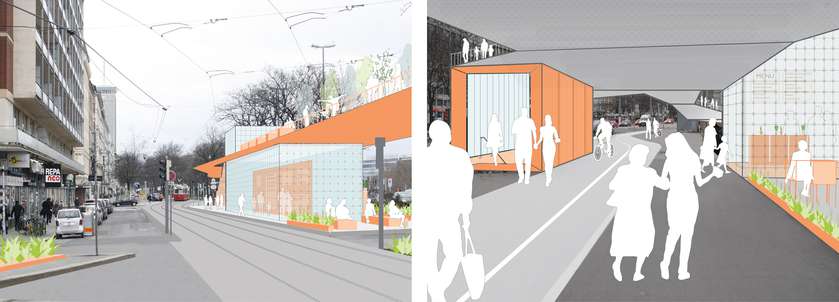
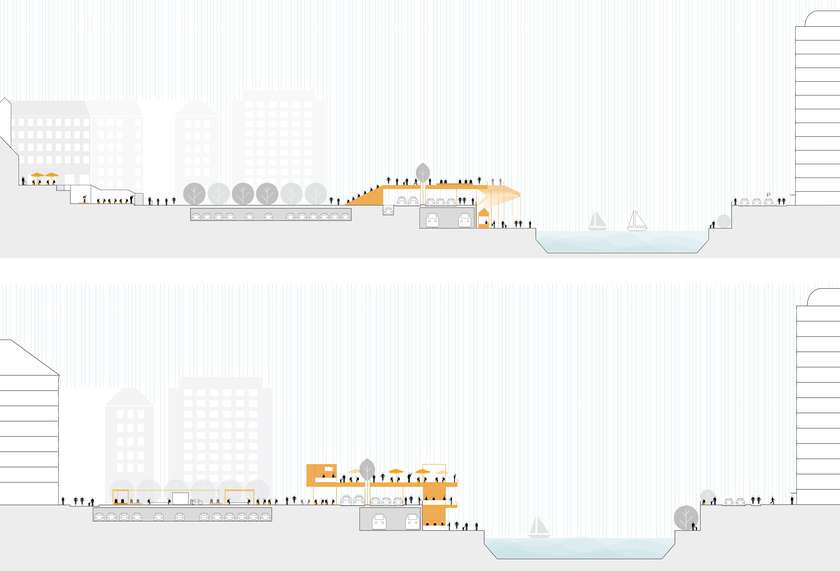
2. An added value is required to the infrastructure and it concerns the possibility of influence more the points with which it is in contact, in order to give multiple answers to territories or cities which may re-organize themselves thanks to its” smart presence”. The sections show the design of the “Morzinmarkt”, a system of market-kiosks-bars that reconnects the channel to the city by creating a cognitive unicuum among the square, the market and the channel.

3. Public space shouldn't be a neutral open-air space, but a rich urban surface with a strong identity and suitable for everyday and flexible uses, offering options for different user groups, without exclusion. As a result, the “overhead tape” consists of a promenade surface and of a series of modular volumes, that can adapt to the needs of the city. The initial configuration responds to the need for space for historical memory, sport activities and tourist information.
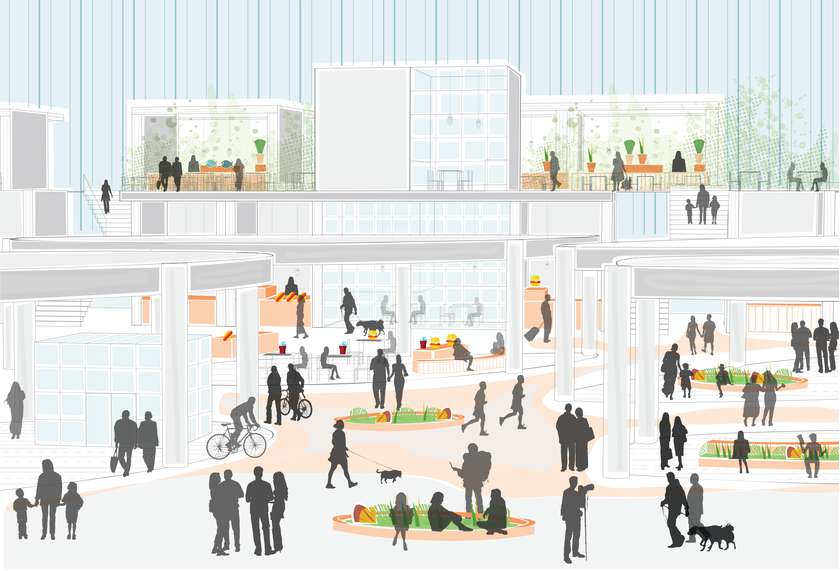
4. With the design of new and valuable public spaces, new forms of sociability take place and the phenomenon of the “serendipity” is promoted. The “serendipity” is the result of the co-presence of many individuals who are able to give shape to new ideas, insights and innovations that constitute the essence of the city and it concerns the ability of men and women to turn unexpected events into opportunities.